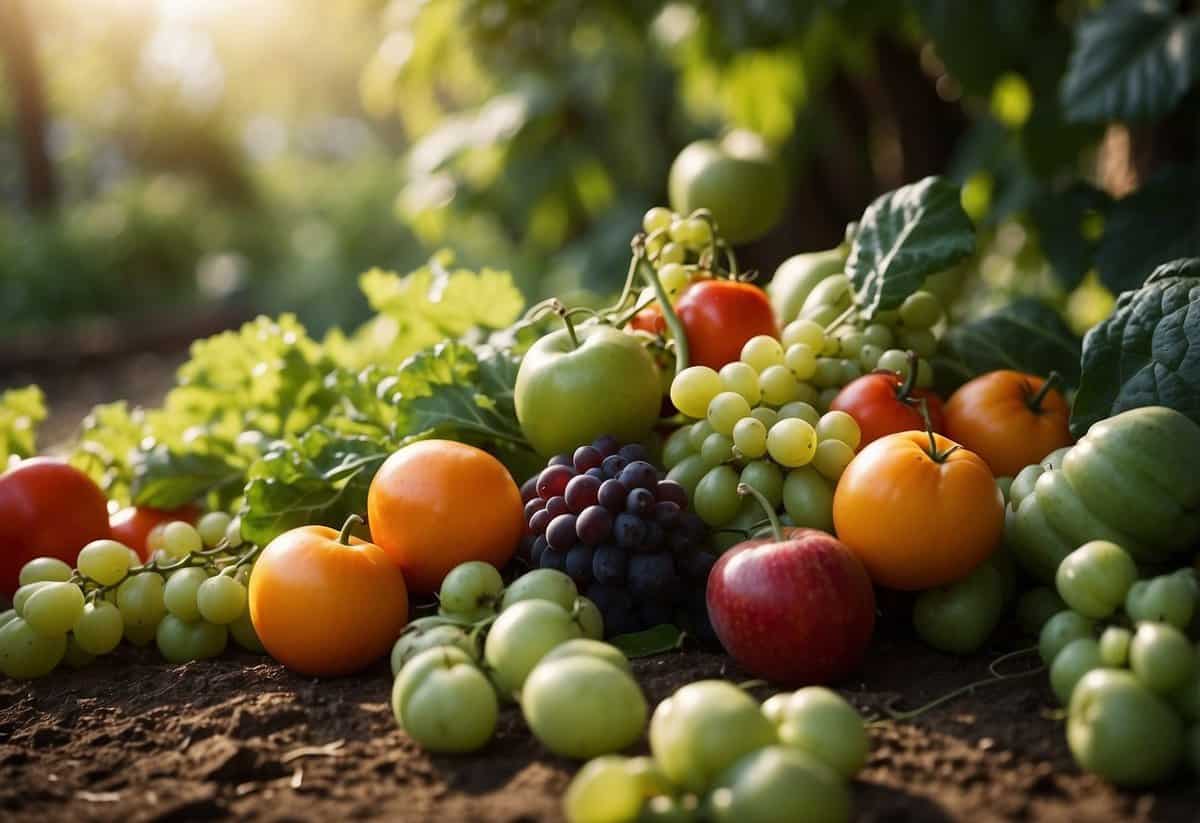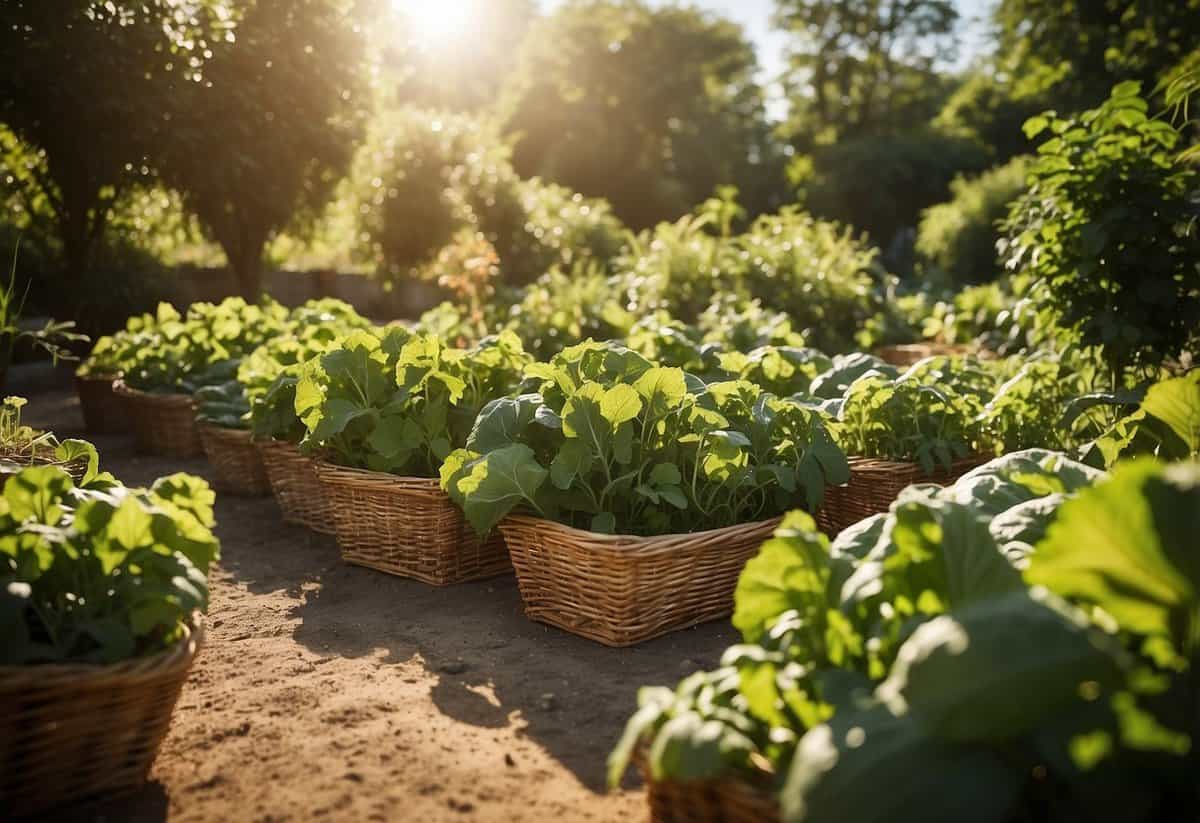Garden Harvest Tips: Expert Advice for Bountiful Yields
Gardening is a rewarding activity that yields fresh and healthy produce right in your backyard. As you watch your garden grow, knowing when and how to harvest your vegetables can make a big difference. The key to a successful garden harvest lies in timing and technique.

A well-timed harvest ensures that your produce is at its peak flavor and nutritional value. By paying attention to your plants and using a few helpful tips, you can enjoy a bountiful and delicious yield. Whether you’re a seasoned gardener or just starting, these tips will enhance your growing experience.
1) Start Early

Starting your garden early gives you a head start on the growing season. You can begin by planting seeds indoors several weeks before the last frost date.
Using cloches or row covers outdoors can also protect young plants from the cold.
This makes it possible to start gardening a month earlier and ensures you get the most out of your growing season.
2) Choose the Right Varieties

Selecting the right vegetable varieties for your garden is essential.
Consider your local climate. Some plants thrive in warm weather, while others prefer cooler temperatures.
Think about the space you have. Compact varieties work well for smaller gardens or container gardening.
Make sure to choose vegetables that suit your taste and cooking needs. If you love salads, for example, grow your favorite greens.
For more information, check out this guide on choosing vegetable varieties.
3) Soil Preparation

First, clear out any rocks, weeds, or debris from your garden area. This helps your plants grow without obstacles.
Next, loosen the soil to at least 8 inches deep. This allows roots to expand easily.
Add organic matter like compost or aged manure to provide essential nutrients.
Test your soil to check its texture. Sandy soil needs more organic material, while clay soil requires good drainage improvements.
4) Water Wisely

Watering your garden the right way can make a big difference. Aim the water at the base of the plants to avoid wetting the leaves. This helps prevent fungus and other diseases.
Using mulch around your plants can keep the soil moist longer and prevent runoff. For larger gardens, consider an irrigation system with a timer to save both water and your time.
You can also collect rainwater using a rain barrel. This provides a free water source for those dry spells. By using these methods, you can ensure your garden stays hydrated and healthy.
5) Use Mulch

Using mulch in your garden can be a game changer. It helps keep the soil moist by reducing water evaporation. This means you won’t have to water your plants as often.
Mulch also helps control weeds. By covering the soil, it blocks sunlight from reaching weed seeds, preventing them from growing. Plus, as mulch breaks down, it adds nutrients to the soil.
For best results, apply a layer of mulch about 2-4 inches thick. Avoid piling it up against plant stems to ensure proper air circulation. Check out these mulching tips for more helpful advice.
6) Prune Regularly

Pruning helps your plants grow the way you want them to. By cutting back leaves and stems, you can guide plants to get more sunlight and space.
For instance, regularly prune the back leaves of herbs and vegetables like Swiss chard and peppers. This helps them grow better and gives other plants more room.
Always prune at the right time. It’s best to prune vegetable plants when they are dormant or not actively growing. This keeps them healthy and boosts their growth.
7) Companion Planting

Companion planting helps your veggies grow better together. For example, you can plant tall corn next to lettuce. The corn will give the lettuce some needed shade in the hot sun.
Beans and corn make a great pair too. Beans add nitrogen to the soil, which corn loves, and the corn stalks support the beans as they climb.
Try planting flowers like tansy and rosemary near your vegetables. These flowers repel pests like ants and beetles, keeping your plants healthy. For more details on companion planting, see this guide.
8) Pest Control

Keeping pests away from your garden is important. Start by checking plants regularly for signs of insect damage. Look under the leaves and around the stems.
Try spraying plants with a mixture of water and mild soap. If you see any pests, remove them by hand.
Using food-grade diatomaceous earth helps repel crawling insects. Sprinkle it around the base of your plants.
Maintain a clean garden. Remove fallen leaves and plant debris where pests can hide. Rotate your crops each year to disrupt pest life cycles. Consider using barriers like row covers to protect your plants.
9) Harvest at Peak Ripeness

Picking your vegetables and fruits at the right time is key.
For broccoli, cut the main head when it’s 3 to 6 inches wide and the buds are tightly closed. Morning is best to avoid bitterness.
Tomatillos are ready when their husks split. Store them in the fridge in a paper bag to keep them fresh for weeks.
10) Store Properly

To keep your garden harvest fresh longer, it’s important to store your produce correctly. For herbs like mint and basil, place them in a glass of water in the fridge. Cover them with a plastic bag to maintain moisture balance.
For root vegetables like carrots and beets, brush off the loose soil and store them in damp sand or peat moss. This keeps them fresh and crispy for longer. Storing fruits and vegetables properly helps you enjoy your hard-earned harvest even after the growing season ends.
Optimal Harvest Times

Knowing the best time to harvest your garden vegetables can improve both flavor and storage. Key factors include identifying the ripeness of your crops and considering seasonal changes for optimal growth.
Identifying Peak Ripeness
Recognizing when vegetables are at their peak ripeness ensures that you get the best texture and taste. For example, broccoli should be harvested when the main head is 3 to 6 inches in diameter with compact and tightly closed flower buds. If the flowers start to turn yellow, it’s overripe.
Tomatoes are best picked when they have reached their full color, whether red, yellow, or purple, depending on the variety. They should be firm but yield slightly to pressure. Picking them too late can lead to mushy texture.
Carrots are ready when they are around 1/2 to 1 inch in diameter. You can gently pull one from the soil to check for size. Leafy greens like lettuce should be harvested when the leaves are tender and not too large to avoid bitterness.
Seasonal Considerations
Seasonal timing is crucial for harvesting the best produce. Many vegetables have an ideal growth period varying from 70 to 120 days. For instance, planting and harvesting charts can guide you in determining the right times.
Cool-weather crops like spinach and lettuce should be harvested in early spring or late fall. They thrive in cooler temperatures. Warm-weather crops such as peppers and tomatoes are best harvested in mid to late summer.
It’s important to know the growing season of each vegetable in your garden. Too much heat can cause some vegetables to bolt, while cold can inhibit growth. Understanding seasonality helps you plan and harvest effectively.
Harvesting Techniques

Knowing the right techniques for harvesting your garden can make a huge difference in the quality and quantity of your produce. Let’s explore the necessary tools and compare manual and mechanical harvesting.
Tools and Equipment
To successfully harvest your garden, you need proper tools. Basic items include pruning shears, which are great for cutting stems and small branches. Garden gloves protect your hands, while baskets or buckets help collect produce.
Harvest knives are essential for cutting through tougher stems and roots. For digging up root vegetables like potatoes, use a garden fork. Secateurs or pruners are ideal for precise harvesting of fruits like tomatoes and grapes.
Ensure your tools are clean and sharp to prevent plant damage and disease spread. Consider investing in a garden cart or wheelbarrow for larger harvests.
Manual Harvesting vs. Mechanical Harvesting
Manual harvesting involves hand-picking vegetables and fruits. This method allows you to carefully select ripe produce and minimize damage. It’s best suited for small gardens or delicate crops like strawberries and lettuce.
In contrast, mechanical harvesting uses machines like harvesters and combines. These are ideal for large-scale farms as they save time and labor. However, they can sometimes damage crops and are less selective.
Manual harvesting is labor-intensive but provides higher quality control. Mechanical harvesting increases efficiency but may result in more waste. Choose the method that best fits your garden size and type of crops. Your choice will also depend on the scale of your gardening and your personal preferences.







